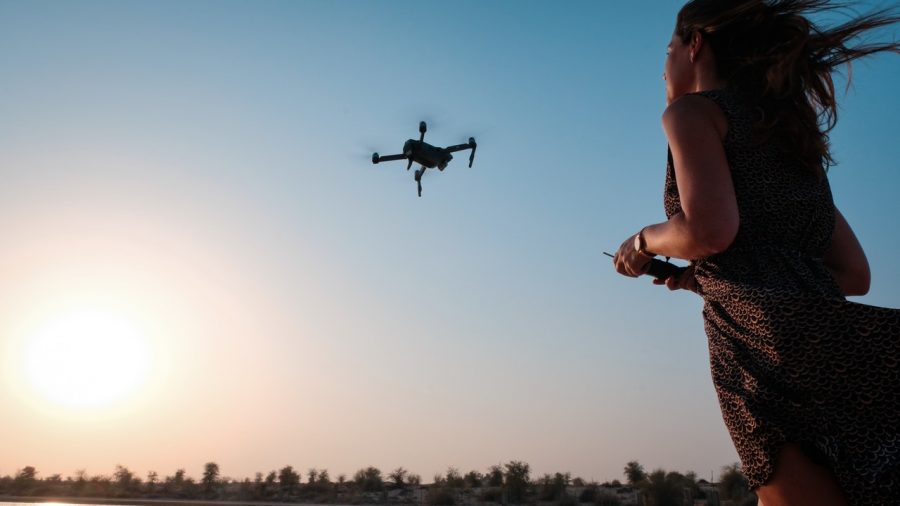Simulation has been an integral part of flight training since before we had computers to do the job. The most famous example has to be the series of Link Trainers from the 1930s to 1950s. These mechanical simulators let pilots learn how to fly by instrumentation safely.
Since the advent of computer flight simulators, pilots are able to get an almost 100% realistic experience. At least when it comes to the big expensive machines. Home flight simulation using a normal computer and a flight stick are also pretty advanced and very realistic. Radio controlled flight is no different and actually plays a central role in learning to fly small unmanned aircraft. Here’s what you need to know.
Why Use a Simulator?
Learning to fly is not something you can really do through trial and error. If you don’t have the skills to keep your drone airborne, then it will crash and that’s the end of it. Unless you can afford to replace or repair the craft until you’ve learned enough, that’s not a practical approach.
Nano drones are one practical option to learn the basics of flight, but there’s a big difference between flying a nano drone and one of the bigger, more expensive models.
Some people may think that modern high-end drones fly themselves. So why bother learning manual flight? The truth is that automated systems can fail and, besides, having an adequate handle on manual flight is a requirement for commercial certification. Practical tests are likely to become an integral part of drone certification in the future.
The most compelling reason to use a simulator is however much more personal – it’s a safe and affordable way to master flying your drone. With no risk of hurting people, damaging property or racking up massive repair bills.
Platforms for Simulators
The most mature platform for home simulation is the PC. Software packages such as RealFlight provide very realistic graphic and physics, while also offering many different types of RC craft such as helicopters, planes and multirotors. The better drone simulators let you try and practice with real products, instead of generic stand ins.
The PC doesn’t own the whole market anymore. Thanks to much more powerful mobile devices, you can now also get mobile versions of software like RealFlight. Clearly the simulations can’t be quite as complex on mobile hardware quite yet, but it’s a viable way to get some practice in wherever you are.
Finally, RC simulators have moved into VR! This is potentially the most realistic way to practice, since watching your drone on a screen removes a lot of the real-world experience.
One place where RC simulators are glaringly absent is with consoles. There aren’t any worthwhile RC sims (or even traditional flight sims) for current consoles, most likely because the appeal is too niche to justify the licensing costs needed to publish on consoles.

Still, we’re pretty spoiled for choice when it comes to platforms that will let you hone your drone flight skills.
Controlling Your Simulator
One of the most important factors when practicing with a drone sim is how you control the simulated craft. The gold standard is to use a mock RC controller. These are often bundles with simulation software, but can be bought separately. This will give you exactly the same feel and operation as using a real transmitter.
Using a gamepad is possible, but the sticks on these devices center themselves, making it impossible to set throttle positions. Obviously using a HOTAS joystick or keyboard and mouse will also be useless for building the right sort of muscle memory.
Apps that use a phone touchscreen are OK in terms of accuracy, but provide no tactile feedback. So in the end you need to be clear on what your training needs are and whether your available control scheme is appropriate.
The Limitations of a Simulator
Putting in the sim hours will do wonders for your drone piloting skills. It’s also a great way to try out drone flight before ever buying one. However, simulators are not perfect. In the real world, the laws of physics are more unforgiving. The simulator can’t simulate them exactly, so there’s always a different feeling when real winds are buffeting your craft.
No sim can prepare you for the real-world tension of flying a real object with weight and velocity. It’s different when you have a few hundred dollars’ worth of hardware hovering overhead. However, with enough simulator time under the belt, you can focus on those aspects instead of struggling with your lack of muscle memory or spatial orientation, and that’s not nothing!






 Your total news and information resource for all things Science, Technology, Engineering / Mathematics, Art, and Medicine / Health.
Your total news and information resource for all things Science, Technology, Engineering / Mathematics, Art, and Medicine / Health.
Leave a Comment